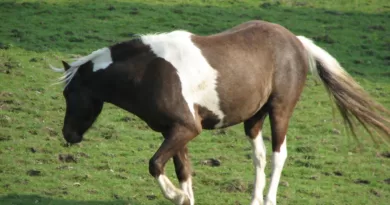What Are Horse Beans
A Brief History of Horse Beans
Horse beans, also known as fava beans, have a long history that dates back thousands of years. They are believed to have originated in the Mediterranean region and were cultivated by ancient civilizations such as the Greeks and the Egyptians. These legumes were highly valued for their nutritional content and were often used as a staple food source.
In ancient times, horse beans held significant cultural and religious significance. They were considered sacred by the ancient Egyptians, who associated them with resurrection and rebirth. In fact, horse beans were often buried with the deceased to ensure their journey to the afterlife. Additionally, horse beans were commonly used in ancient Greek and Roman rituals as offerings to the gods. Their use in religious practices further highlights the esteemed status of these legumes in various cultures throughout history.
The Characteristics of Horse Beans
Horse beans, also known as broad beans or fava beans, are a versatile and nutritious legume. They have a distinctive shape, with a large, flat, and kidney-like appearance. The color of horse beans can vary, ranging from green to white or even a combination of both. These beans have a smooth and firm texture, making them suitable for various cooking methods.
One of the key characteristics of horse beans is their rich flavor profile. They have a robust and earthy taste, often described as nutty or meaty. This distinctive flavor makes horse beans an excellent addition to a wide range of dishes, including salads, stews, soups, and casseroles. Their flavor pairs well with other ingredients such as garlic, herbs, lemon, and olive oil. Additionally, horse beans have a slightly bitter aftertaste, which adds complexity to culinary preparations.
Another notable characteristic of horse beans is their size. Compared to other types of beans, horse beans are relatively large, making them easy to handle and cook. Their size also contributes to their satisfying texture when cooked. Horse beans have a creamy and tender consistency that holds up well in various cooking methods, including boiling, sautéing, steaming, or roasting. This versatility allows for endless possibilities in incorporating horse beans into different recipes.
The Nutritional Value of Horse Beans
Horse beans, also known as broad beans, are not only delicious but also packed with essential nutrients. These legumes are a great source of protein, making them an excellent choice for those following a vegetarian or vegan diet. Additionally, horse beans are rich in dietary fiber, which aids in digestion and helps maintain a healthy weight.
Furthermore, horse beans are a great source of vitamins and minerals. They contain high levels of vitamin B6, which is essential for brain function and the production of red blood cells. Horse beans are also a good source of folate, which is crucial for the production of DNA and the growth of new cells. Moreover, they are rich in potassium, iron, and magnesium, which help support heart health and play a vital role in muscle function.
Different Varieties of Horse Beans
Horse beans, also known as broad beans, come in various varieties that cater to different preferences and culinary needs. One popular type is the “Longpod” variety, which is recognized for its long, slender pods and abundant beans. These beans are known for their mild flavor and tender texture when cooked.
Another variety is the “Aquadulce” bean, characterized by its large, plump pods that house several beans. Aquadulce beans are often sown in autumn and are hardy enough to withstand frost, making them a great option for early spring harvest. These beans have a delicate taste and are often enjoyed in soups, stews, and purees.
How to Grow Horse Beans in Your Garden
When it comes to growing horse beans in your garden, there are a few important factors to consider. First and foremost, horse beans thrive in cool climates, making them an ideal crop for spring or fall planting. It is recommended to sow the beans directly in the garden bed, as they do not transplant well.
To start, prepare the soil by removing any weeds and loosening it with a garden fork or tiller. Horse beans prefer well-draining soil and benefit from the addition of organic matter such as compost or well-rotted manure. Create furrows in the soil, spaced about 18 inches apart, and sow the beans about 2 inches deep. Space the seeds about 4 inches apart within the furrow. Afterward, gently cover the seeds with soil and water thoroughly.
• Choose a cool climate for growing horse beans in your garden.
• Opt for spring or fall planting as it is the ideal time for these crops.
• Sow the beans directly in the garden bed instead of transplanting them.
• Prepare the soil by removing weeds and loosening it with a garden fork or tiller.
• Ensure that the soil is well-draining to provide optimal conditions for horse bean growth.
• Add organic matter like compost or well-rotted manure to enhance soil fertility.
• Create furrows in the soil, spacing them about 18 inches apart to accommodate the beans’ growth.
• Plant the seeds about 2 inches deep within each furrow.
• Space out each seed around 4 inches apart from one another within the furrow.
• Cover gently with soil after planting and water thoroughly to ensure proper hydration.
Common Uses for Horse Beans
One common use for horse beans is in animal feed. Due to their high protein content, horse beans are often included in the diets of livestock such as pigs, chickens, and horses. The beans can be ground and mixed with other ingredients to create a balanced feed that provides essential nutrients for growth and development.
In addition to animal feed, horse beans can also be utilized in human consumption. They are often cooked and incorporated into soups, stews, and salads, adding a hearty and nutty flavor to the dishes. Horse beans can also be pureed or mashed to create dips and spreads, offering a rich and creamy texture. With their versatility and nutritional value, horse beans can be a valuable ingredient in both animal and human diets.
Health Benefits of Consuming Horse Beans
Horse beans, also known as fava beans, come packed with numerous health benefits. Firstly, they are an excellent source of dietary fiber, which helps to promote healthy digestion and prevent constipation. Fiber also aids in regulating blood sugar levels and lowering cholesterol, reducing the risk of heart disease and diabetes.
Additionally, horse beans are a good source of plant-based protein, making them a valuable addition to vegetarian and vegan diets. Protein is essential for muscle growth, tissue repair, and overall energy production in the body. Horse beans also contain essential amino acids that help in the synthesis of neurotransmitters, improving brain function and overall mental health. Incorporating horse beans into your diet can contribute to increased satiety, making them a helpful addition to weight management strategies.
Potential Risks and Side Effects of Horse Beans
While horse beans are generally considered safe for consumption, it is important to be aware of a few potential risks and side effects. Some individuals may experience digestive issues after eating horse beans, such as bloating, gas, or stomach discomfort. This can be attributed to the high fiber content of horse beans and can be mitigated by gradually increasing the intake and ensuring proper cooking.
Another potential side effect of consuming horse beans is an allergic reaction. Although rare, some individuals may be allergic to legumes, including horse beans. Symptoms of an allergic reaction can vary in severity, ranging from mild symptoms such as itching or hives to more severe reactions like difficulty breathing or anaphylaxis. If you suspect you have an allergy to horse beans or any legume, it is advisable to consult with a healthcare professional for diagnosis and guidance.
Cooking and Preparation Tips for Horse Beans
When it comes to cooking and preparing horse beans, there are a few tips to keep in mind. First, before cooking, it is important to soak the beans overnight in water. This helps to soften them and reduce the cooking time. Once soaked, drain the beans and rinse them thoroughly.
Next, horse beans can be cooked in a variety of ways. One popular method is to boil them until tender. Simply add the beans to a pot of boiling water and cook for approximately 45 minutes to an hour, or until they are soft to the touch. Alternatively, you can also pressure cook horse beans for faster results. Just make sure to follow the manufacturer’s instructions for your specific pressure cooker model.
In terms of flavoring, horse beans often benefit from the addition of herbs and spices. Common choices include garlic, thyme, rosemary, and bay leaves. These can be added during the cooking process to infuse the beans with extra flavor. Additionally, you can mix horse beans with other ingredients to create hearty soups, stews, or salads.
Remember, horse beans should always be cooked thoroughly to ensure they are safe to eat. Some individuals may experience digestive discomfort if the beans are not fully cooked. By following these simple cooking and preparation tips, you can enjoy the nutritious and delicious horse beans to their fullest potential.
Horse Beans in Traditional and International Cuisine
Horse beans have long been featured in traditional cuisines across cultures. In Mediterranean cuisine, they are often used in soups and stews, adding a rich and hearty flavor to the dishes. In Egyptian cuisine, horse beans, also known as fava beans, are a staple ingredient in the popular dish called Ful Medames. These beans are cooked until tender, seasoned with spices, and served with olive oil and garlic-infused yogurt on top. The dish is typically enjoyed with bread or as a filling for sandwiches. In Latin American cuisine, horse beans are commonly used in various dishes, including refried beans, salads, and empanadas.
Similarly, horse beans have found their way into international cuisines as well. In Indian cuisine, they are often used to make dal, a thick and flavorful lentil soup. In Ethiopian cuisine, horse beans are a key component in the dish called ful, where they are cooked with spices and served with injera, a type of fermented flatbread. In Chinese cuisine, horse beans are used in stir-fries and are often combined with other vegetables and meat for a delightful and nutritious meal. Overall, the versatility of horse beans makes them a popular choice in traditional and international cuisines alike. Whether added to soups, stews, salads, or main dishes, horse beans bring a unique texture and taste that elevate the flavors of any dish they are part of.
What are horse beans?
Horse beans, also known as broad beans, are a type of legume that has been cultivated for centuries. They have a distinct flavor and a slightly nutty taste.
How long have horse beans been used in cuisine?
Horse beans have a long history and have been consumed by humans for thousands of years. They were cultivated in ancient civilizations such as Egypt and Greece.
What are the nutritional benefits of horse beans?
Horse beans are a good source of protein, fiber, and vitamins such as folate and vitamin B6. They also contain antioxidants and minerals like iron, magnesium, and potassium.
Are there different varieties of horse beans?
Yes, there are several varieties of horse beans, including the traditional white horse beans, as well as colored varieties such as red, purple, and brown.
Can I grow horse beans in my garden?
Yes, horse beans can be grown in a home garden. They are relatively easy to grow and can be planted in early spring.
How can I use horse beans in cooking?
Horse beans can be used in a variety of dishes, such as salads, soups, stews, and stir-fries. They can also be mashed or pureed to make dips or spreads.
What are some health benefits of consuming horse beans?
Consuming horse beans can help lower cholesterol levels, regulate blood sugar levels, and promote better digestion. They are also beneficial for heart health and can aid in weight management.
Are there any potential risks or side effects of consuming horse beans?
Some individuals may experience digestive issues such as gas or bloating after consuming horse beans. It is also important to note that horse beans contain a compound called vicine, which can be toxic if consumed in large quantities.
Any cooking tips for horse beans?
Before cooking horse beans, it is recommended to peel off the outer skin for a smoother texture. They can be boiled, steamed, or roasted depending on the desired dish.
How are horse beans used in traditional and international cuisine?
Horse beans are used in a variety of traditional dishes around the world. They are used in Egyptian falafel, Spanish paella, Moroccan tagines, and Italian dishes such as pasta and soups. They are also commonly used in Middle Eastern and Mediterranean cuisine.




